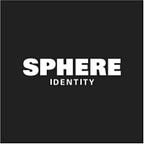The impact of the Belt and Road initiative on the identity technology
The Belt and Road (B&R) initiative is predicted to involve 63% of the world’s population, generate 80% of the world’s GDP by 2050. This will generate a total economic volume of $21 trillion US dollars (29% of the world’s total). The initiative is expected to drive international trade along new routes and create a surge in labour migrations among the 68 countries taking part. This growing movement of goods and people, among countries with national identity systems poses new challenges for identity interoperability.
The B&R is a long-term development strategy for the vast region. $300 trillion investment is forecast for the project by China and there is substantial infrastructure project funding by the Asian Development Bank. The aim of the initiative is that to increase economic growth and development for the mutual benefit of the participating countries. Improvements in road connectivity, unimpeded trade, money circulation, policy communication and cultural understanding between Asia, Europe and Africa are the intended outcomes. New channels for the movement of trade, people and money can be expected to drive the development of identity and other tools which enable movement. Change on such a scale, in such a vast geographical region takes time. This monumental project is due for completion in 2049.
Belt & Road Infrastructure
The B&R comprises two routes — the Economic Belt or Silk Road and the Maritime Road or Maritime Silk Road. This is a way of reopening the old silk road.
One of the big B&R infrastructure projects already well underway, is the development of a high-speed rail-freight network from China to Europe. For the B&R initiative to be a success, cooperation between the Asian and European countries is essential. The rail-freight network is an indication of early success in cooperation on the B&R project. The rail-freight network enables the flow of goods between China and Europe. Western firms are especially interested in rail freight as this helps them to lower cost, according to Ronald Kleijwegt (industry expert). Passenger rail would be a valuable addition to movement of people across the region. Where smart transport infrastructure is built, this will trigger advances in IoT identity technology
This will lead to more movement of people, goods and the need for better and advanced IoT identity technology.
Belt and Road Workers
With growth and opportunities in the B&R region, business and trade are not the only things to be affected. An increase in the movement of people across the region, for work and trade will lead to new patterns and number of economic migration. Migrant workers and entrepreneurs bring with them diverse backgrounds in terms of their language, identity, socio-economic status.
Diversity and increase movement of people necessitate new levels of security in terms of identity. Labour migration was already above 80% for some countries within the region. There are 4.5 billion people living in the region, representing a large labour force reserve. In China alone there is a total emigration population of 35 million, which is a major source of migrants to the entire world. In the Eurasian Economic Union (EAEU), Russia and Kazakhstan are the main receiving countries while Central Asian countries (aside from Kazakhstan) are sending countries.
Major infrastructure projects and associated trade will drive the demand for experts. Labour shortages will drive a potential increase in labour migration. To speed up the signing up and onboarding of new workers, digital identity and onboarding need to be revolutionised. The secure management of international identities is a basic requirement for this initiative. Within the B&R region people need to be able to secure and control their personal records and have easier and faster access to opportunities. Employers and companies involved in infrastructure construction or trade need to transact and onboard quickly.
The Belt and Road identity challenge
The new infrastructure and movement of people in the B&R region will either be facilitated or impeded by access technologies. That’s why it’s important that identity solutions used in the region are interoperable. Europe’s GDPR and strong South Korean data protection laws bookend data protection for the region. 41 major languages add to identity portability and localization challenges. The initiative’s drive for innovation and integration presents an opportunity for identity solution leapfrogging, specifically for personal and IoT identity.
Sign up for updates from Sphere Identity by clicking here.
